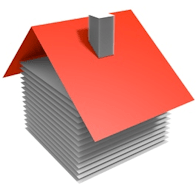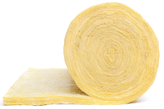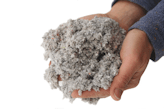Roof and Ceiling Insulation
Insulation can save up to 30% on your heating expenses in winter while maintaining the comfort levels in your home!
Heat moves from warmer to cooler areas. On cold winter days, warm air escapes from your home through the roof. On warm summer days, the air in your roof is heated by the sun, and this heats up your house.
Roof Insulation slows this process of transfer down.
Insulation In Winter
The heat in your home escapes through the roof in the cold winter months. Roof or Ceiling Insulation keeps the heat in the house where it is needed, thereby saving you up to 30% on your heating expenses.

Insulation In Summer
Roof or Ceiling Insulation can reduce the temperature in your home by up to 7°C during the warm summer months.
This will save you on cooling costs whilst maintaining the level of comfort your family enjoys

Using Roof and Ceiling insulation as a natural method of controlling temperature reduces your energy bills and puts less strain on the environment.
Your pocket is happy and so is our planet.
In order to assist you in making an informed decision regarding insulation product selection, we have compiled the following information. It is important to note that although we recommend the platinum fibre product, we can install some of the other products as well.
What to look out for when deciding on the type of insulation
There are various types of insulation products on the market today. The following things need to be carefully considered when deciding which one to use.
Our recommended roof insulation product is Fabufill
Fibreglass Thermal Insulation

Fiberglass will irritate the eyes, skin, and the respiratory system, especially when it is inhalable*. Fibreglass insulation fibres can release into the roof cavity and seep into the house through the cornices and holes cut into the ceiling for light fittings.
Because the fibres are constantly released, the product gets thinner and its effectiveness decreases over time.
In the event that a geyser bursts, Fibreglass will suffer damage. It may absorb the moisture and cause sags and gaps in the material thereby compromising its insulation ability.
Fiberglass is resistant to mold but growth can occur if it becomes wet and contaminated with organic material. Fiberglass insulation that has become wet should be inspected for evidence of residual moisture and contamination.
Fibreglass will not repel rodents. In fact it is one of mice’s preferred construction materials for nesting**.
Cellulose Fibre Insulation

Cellulose fibre weighs roughly three times as much per square foot as loose fiberglass***. The amount of cellulose required to cover a given area is therefore more than other insulators required for the same area. This may be a problem if you choose cellulose insulation for weak ceilings.
It has been noticed that most of the blown cellulose insulation settles with time and gets compact, thereby reducing their insulating capability after a few years.
Wet spraying cellulose (with chemical treatments) should be given the proper drying time. If it is not given a proper drying time before cavities are sealed up, it could retain the moisture in the insulation for over a year.
Cellulose fibre is extremely prone to moisture problems as the product is made of paper. Not only will large amounts of water damage the insulation but moisture retention can lead to mold and mildew too.
Because the paper fibres in Cellulose fibre are extremely small, it increases the dust level in the rooms.
Because this product is sprayed into the roof, it is often hard to ensure the same level of thickness across the entire ceiling area.
As far as roof maintenance operations are concerned, it is not a pleasant material to work around as the fibres cling to material, tools and clothing when it is disturbed. More often than not the surrounding roof trap door area and floors inside the house need to be cleaned following roof maintenance activities.
Foil Faced Insulation Blankets
 Roof Ceiling Insulation FoilFaced This product is more expensive than other insulation material. The
foil tears easily, compromising its insulation ability. The product has to be installed around the roof
trusses, which leaves open cavities where heat can escape.
Roof Ceiling Insulation FoilFaced This product is more expensive than other insulation material. The
foil tears easily, compromising its insulation ability. The product has to be installed around the roof
trusses, which leaves open cavities where heat can escape.

